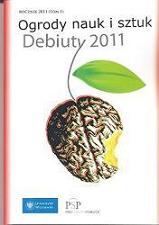Diabeł w kazaniach Peregryna z Opola
The devil in the sermons of Peregrinus Opoliensis
Author(s): Marcin KiełbusSubject(s): Economy
Published by: Fundacja Pro Scientia Publica
Keywords: Peregrinus Opoliensis; exempla; George Minois; Jean Delumeau; sermons; Middle Ages; new evangelisation; the preaching of fear; vision of the beyond; hell; Satan; devil
Summary/Abstract: Created at the end of the 13th century the sermons of Peregrinus Opoliensis are not only tools of the “new evangelisation”, which had been conducted in that century by the mendicant orders, but are also some of the most popular in the whole Europe, until the 16th century. And because of this, they can be considered as representative for the teachings of the late Middle Ages. In this context the works of two famous historians of culture: George Minois and Jean Delumeau, discussing the problem of demonology, are especially interesting. The former of the academics claims that about the year of 1250 took place the theoretic systematisation of the phenomenon called “preaching of fear”, which was the improvement of the morality of the faithful with the method of terrifying them with the vision of the beyond. Yet Jean Delumeau’s claims are completely different. He states that it is not before the 14th century that everything changes and that it is then that the repression of the diabolic matters, which was succeeded by the classical age of cathedrals, makes way for the progressive demonic invasion. The Divine Comedy (which’s author died in 1321) marks the symbolic transformation from one age to another and the moment when the religious awareness of the western elite begins to cease to resist the wave of Satanism. It would recover not before the 17th century. The aim of the paper is the confrontation of those contradictory opinions with the sermons of Peregrinus Opoliensis along with simultaneous extraction of the preacher’s demonology. His exempla demand special attention, as in them often the vision of the beyond, including hell, is relatively often summoned. Equally often the demonic figure appears in the sermons. The analysis of those scattered mentions reveals that the devil, Satan, or evil spirit, if present in his hell, is a cruel executioner, however he is also limited by the guarding of the adequacy of the punishment to the deed. But when he is among the people, he attempts to become similar to them and lurks for their mistakes, being himself limited in his actions. Such a figure of the evil one is thus only a punishing arm of justice, through which an organised vision of the world is revealed, distinct from the one, which has been describes by George Minois.
Journal: Ogrody Nauk i Sztuk
- Issue Year: 2011
- Issue No: 1
- Page Range: 321-328
- Page Count: 8
- Language: Polish

